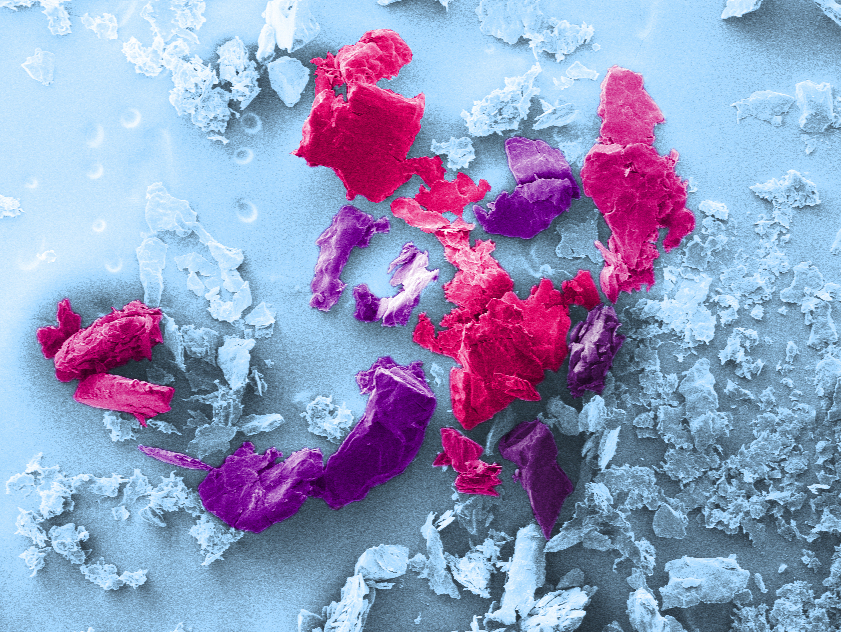
Only a thousandth of a millimetre in size: tiny polymer particles
Source: BAM
Particularly fibrous particles of micro- and nanoplastics are suspected of being harmful. They enter the human body via the air we breathe or the food we eat. Initial data indicate that they could lead to irritation of the respiratory tract, chronic inflammation and damage to the lungs.
But so far there is a lack of robust data that could be the basis for a risk assessment and appropriate regulatory measures. This is mainly because it is very complicated to measure and precisely quantify occurrences of micro- or nanoplastics in the environment.
This is where the POLYRISK project comes in, which is supported by the EU's Horizon 2020 funding programme with 5.9 million euros. Over the next four years, it will conduct fundamental research into the possible risks of micro- and nanoplastics. In addition to the Bundesanstalt für Materialforschung und -prüfung (BAM), other state institutes, public and private research institutions and universities from numerous European countries are involved.
BAM has been conducting intensive research on microplastics for several years and has developed a novel and fast detection method for the polymer particles in environmental samples as well as the world's first reference materials in this field. "For POLYRISK we will in particular further develop our test and reference materials for microplastics and produce those for nanoplastics from scratch," says Korinna Altmann from BAM. "They are the prerequisite for being able to develop validated methods for sampling and assessment and thus the basis for empirical data collection." First, a reference material for polyethylene terephthalate (PET), which is used for drinking bottles, for example, is to be created at BAM.
The complement to POLYRISK is the EU project PlasticsFatE, also funded by Horizon 2020 with 5.9 million euros. For this second EU-wide consortium, BAM will comprehensively physicochemically characterise the new reference materials for micro- and nanoplastics. "This is also new scientific territory," says Vasile-Dan Hodoroaba from BAM. "We will have to develop completely new measurement procedures for this. Here, we will benefit from our many years of expertise in the field of nano as well as BAM's excellent equipment."
In four years, the results of POLYRISK and PlasticsFatE will be incorporated into recommendations for standards and laws to effectively protect EU citizens from the potential health risks posed by micro- and nanoplastics.


